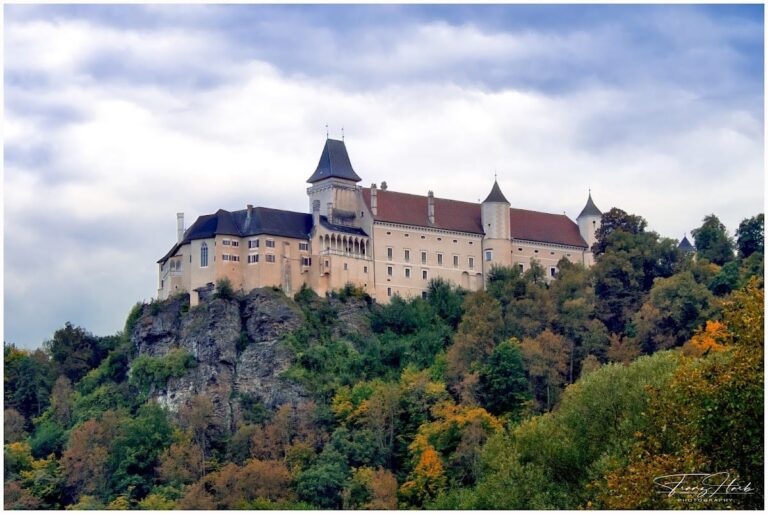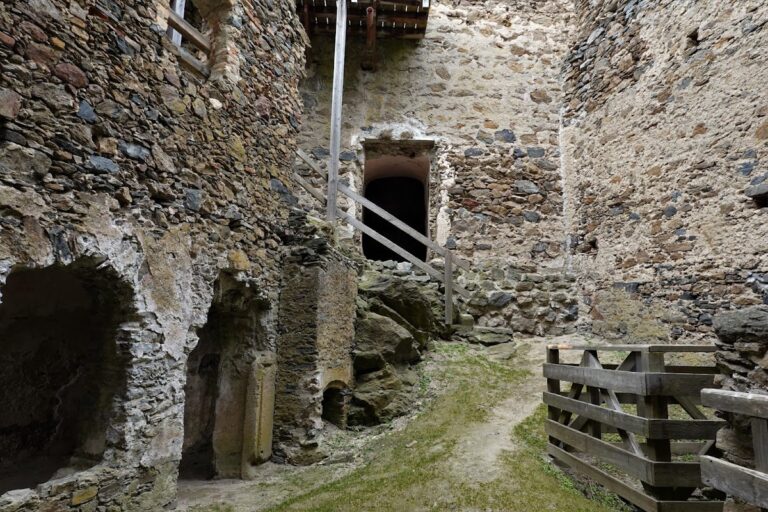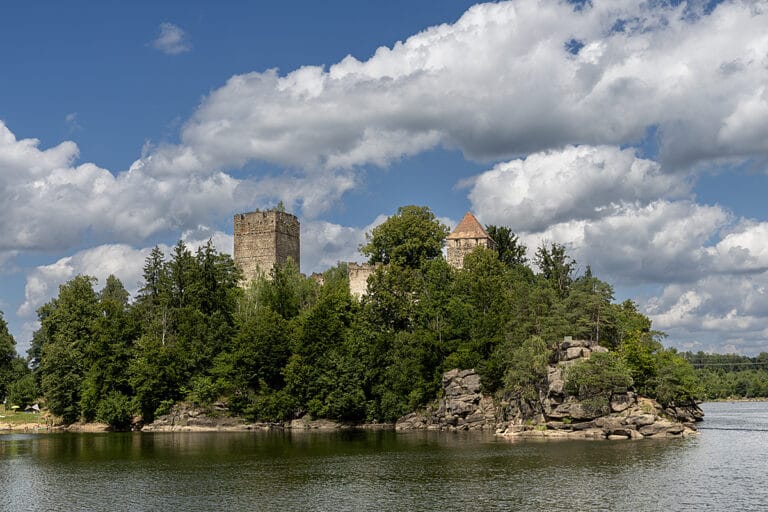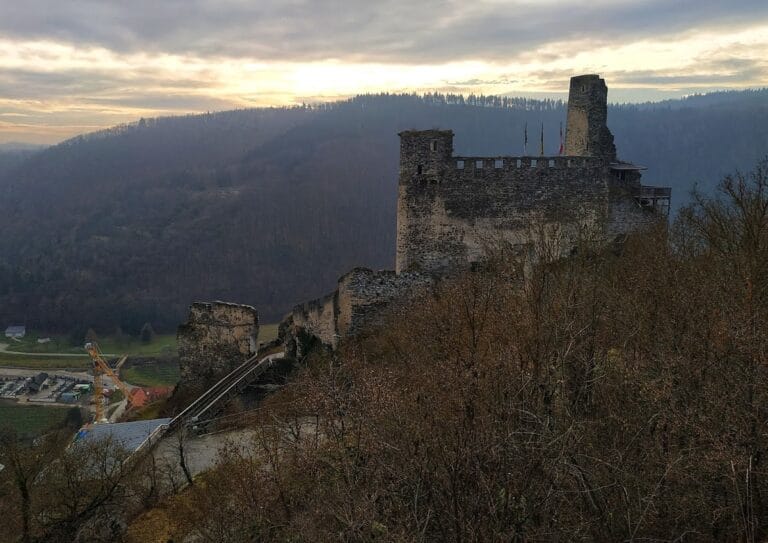Altenburg Abbey: A Benedictine Monastery in Austria
Visitor Information
Google Rating: 4.7
Popularity: Low
Google Maps: View on Google Maps
Official Website: www.stift-altenburg.at
Country: Austria
Civilization: Medieval European
Remains: Military
History
Altenburg Abbey is a Benedictine monastery located in the municipality of Altenburg, Austria. Founded in 1144 by Countess Hildburg of Poigen-Rebgau, the abbey was established as a religious community hosting monks who followed the Rule of Saint Benedict. The initial settlers were twelve monks from St. Lambrecht Abbey in Styria, who named the new foundation after their home monastery and dedicated their prayers to the noble families of the surrounding Poigreich region.
Throughout its medieval history, Altenburg Abbey endured multiple military attacks and periods of destruction. The first recorded assault took place in 1251, led by Herman V of Baden. Subsequent raids occurred between 1304 and 1327 by the nomadic Cumans, followed by damage sustained during the Hussite Wars from 1427 to 1430. In 1448, forces from Bohemia, Moravia, and Hungary launched aggressive assaults on the abbey. The mid-16th century brought Turkish attacks in 1552, and during the Thirty Years’ War, Swedish troops nearly destroyed the monastery in 1645.
Several significant restoration efforts shaped the abbey’s physical and spiritual renewal. Around 1327, Gertrude, widow of Heidenreich von Gars, contributed to rebuilding after earlier devastations. The most extensive reconstruction came in the late 17th and early 18th centuries under abbots Maurus Boxler and Placidus Much. Architect Joseph Munggenast oversaw the redesign in the Baroque style, enlisting prominent Austrian artists such as Paul Troger for frescoes, Franz Joseph Holzinger for stucco, and Johann Georg Hoppl for marble carvings.
In the late 18th century, Emperor Joseph II instituted policies that affected many monastic institutions; Altenburg Abbey was banned from accepting new novices in 1793 but continued its religious functions, distinguishing it from many other monasteries that closed during this period. The abbey was repurposed briefly as a military hospital in 1797, supporting wartime medical needs.
The Abbey’s 20th-century history was marked by the turmoil of the Nazi era. In 1938, Abbot Ambros Minarz protested the display of Nazi insignia, an act which resulted in the occupation of the monastery by SA forces and the community’s closure in 1941. The abbot was arrested and the monks disbanded. Following World War II, the Soviet army occupied the premises until restoration allowed monastic life to resume under Abbot Maurus Knappek between 1947 and 1968.
Archaeological investigations conducted from 1983 to 2005 revealed extensive medieval layers beneath the current abbey complex, unearthing remains of the early cloister, refectory (dining hall), abbot’s residence, monks’ quarters, a scriptorium (where manuscripts were copied), and a Gothic chapel dedicated to Saint Vitus. Despite centuries of change, Altenburg Abbey has maintained continuous monastic presence and since 1625 has been part of the Austrian Congregation of the Benedictine Confederation.
Remains
The abbey complex stretches roughly 200 meters along its east-facing main façade and is set within carefully cultivated gardens. It encompasses twelve distinct sections, including various courtyards, living and working spaces, religious buildings, and garden areas, presenting a blend of medieval foundations and Baroque enhancements.
At the heart of the abbey stands the monastic church dedicated to Saint Lambert. This church features an oval-shaped layout crowned by a dome, rebuilt between 1730 and 1733 by architect Joseph Munggenast, who preserved much of the original Gothic structure beneath the newer design. The interior displays vivid frescoes by Paul Troger, alongside intricate stucco work by Franz Joseph Holzinger and elegant marble carvings by Johann Georg Hoppl. The high altar is adorned with Troger’s painting of the Assumption of the Virgin Mary crowned by an image of the Trinity. The church tower, resting on Romanesque foundations and repaired after fire damage, was completed in 1820.
The abbey’s library, constructed in 1740 as a three-story Baroque hall extending 48 meters, is richly decorated with additional frescoes by Paul Troger. These depict biblical and theological themes such as the Judgment of Solomon, Divine Wisdom, and Light of Faith. Beneath the library lies a crypt featuring medieval frescoes painted by anonymous artists. Among these is a distinctive “Dance of Death” motif, illustrating reflections on mortality common in medieval art.
The interior decoration throughout the abbey combines Baroque and Rococo elements, with stucco and marble details elaborating grand spaces such as the imperial staircase and the marble hall (Sala terrena). These artistic touches were part of the comprehensive Baroque renovation led by Munggenast in collaboration with his team.
Surrounding the abbey are several gardens carefully developed by the monastic community in partnership with local horticulturists. The Garden of Religions honors five world faiths—Hinduism, Buddhism, Judaism, Christianity, and Islam—by dividing the space into dedicated sections. The Apothecary Garden occupies the site where medicinal herbs were grown during medieval times. The Creation Garden presents theological themes related to creation, while the Garden of Silence includes vineyards, butterfly houses, beehives, and eleven stone sculptures created by artist Eva Vorpagel-Redl. Additionally, the historic Cloister Garden provides a contemplative space within the monastery grounds.
Archaeological excavations beneath the eastern façade, especially below an architectural feature called the altane (a balcony or gallery), revealed the remains of the medieval monastery’s original structures. These discoveries include the cloister, refectory, abbot’s house, monks’ living and working quarters, as well as the scriptorium and the chapel dedicated to Saint Vitus, all contributing to a clearer understanding of the abbey’s early spatial organization.
Musical heritage at Altenburg Abbey includes its historic organs. The choir organ, constructed in 2014 by builder Henk Klop, features seven registers and supports liturgical music. The large organ, originally built in 1773 by Anton Pfliegler, has undergone several restorations and modifications throughout the 20th and early 21st centuries, maintaining its role in monastic worship and cultural tradition.










